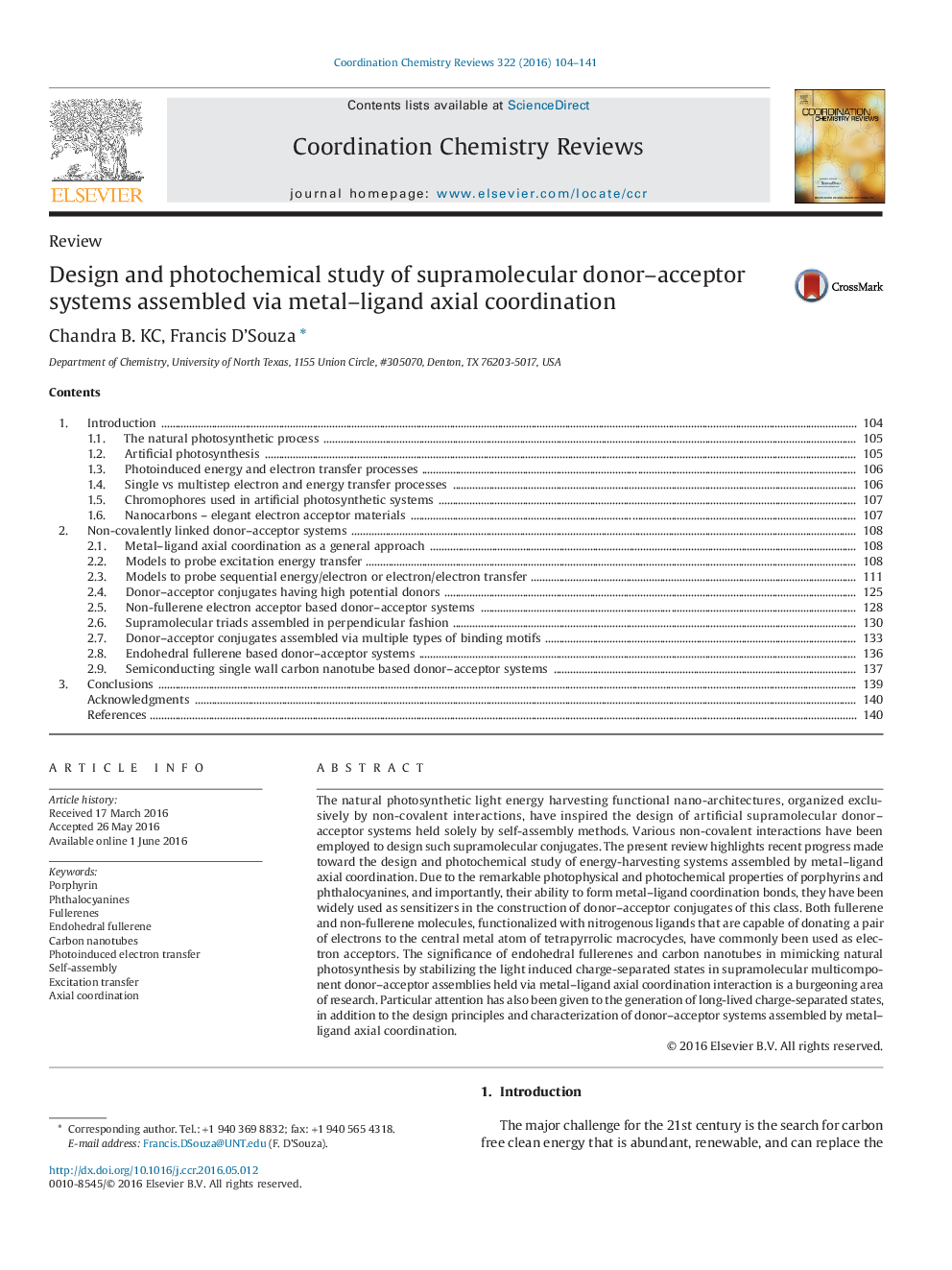| Article ID | Journal | Published Year | Pages | File Type |
|---|---|---|---|---|
| 1300207 | Coordination Chemistry Reviews | 2016 | 38 Pages |
•Strategies for broad-band capturing, supramolecular donor–acceptor systems capable of solar light harvesting is shown.•Sequential energy and electron transfer in self-assembled via metal–ligand axial coordination donor–acceptor hybrids is demonstrated.•Models for photoinduced charge separation leading to long-lived high energy charge-separated states have been accomplished.•Role of nanocarbons (fullerene, nanotube, endohedral fullerene) and metal tetrapyrrole (porphyrin and phthalocyanine) in energy harvesting functional materials is revealed.
The natural photosynthetic light energy harvesting functional nano-architectures, organized exclusively by non-covalent interactions, have inspired the design of artificial supramolecular donor–acceptor systems held solely by self-assembly methods. Various non-covalent interactions have been employed to design such supramolecular conjugates. The present review highlights recent progress made toward the design and photochemical study of energy-harvesting systems assembled by metal–ligand axial coordination. Due to the remarkable photophysical and photochemical properties of porphyrins and phthalocyanines, and importantly, their ability to form metal–ligand coordination bonds, they have been widely used as sensitizers in the construction of donor–acceptor conjugates of this class. Both fullerene and non-fullerene molecules, functionalized with nitrogenous ligands that are capable of donating a pair of electrons to the central metal atom of tetrapyrrolic macrocycles, have commonly been used as electron acceptors. The significance of endohedral fullerenes and carbon nanotubes in mimicking natural photosynthesis by stabilizing the light induced charge-separated states in supramolecular multicomponent donor–acceptor assemblies held via metal–ligand axial coordination interaction is a burgeoning area of research. Particular attention has also been given to the generation of long-lived charge-separated states, in addition to the design principles and characterization of donor–acceptor systems assembled by metal–ligand axial coordination.
Graphical AbstractFigure optionsDownload full-size imageDownload high-quality image (81 K)Download as PowerPoint slide
